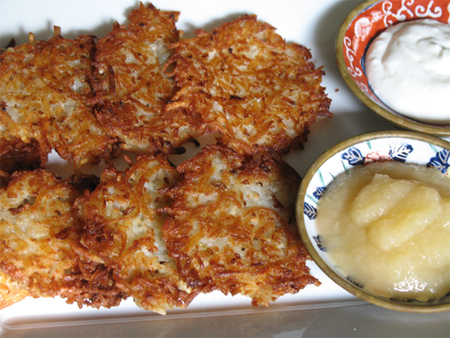Labor Day weekend is upon us, and despite the fact that we were just experiencing a heat wave, come Monday, summer is unofficially at an end.
In truth, summer is not really over until the calendar says it is, on or about September 21. But then, the calendar completely ignores the real indications of the season’s conclusion, like shorter days, covers placed back atop swimming pools, and traffic at a standstill while the school buses unload their charges.
And didn’t I just see Halloween candy being stacked on display at my local food store?
(Why do retailers insist on compressing my life? At this age, I can’t afford to be rushed. But I digress.)
But perhaps the strongest indicator that vacation time has come and gone is the long-lived fashion commandment that, as of tomorrow, all white attire and accessories are subject to banishment!
So, Tuesday might also be considered a holiday, (White-Out Day?) celebrated by collecting all of the white items in your closet and exiling them to storage for the next two seasons. (Unless you spend the winter in Florida, in which case you’re allowed to ship them south.)
Being a woman of a certain age, I cannot remember a time when my seasonal wardrobe was not governed by the Memorial Day\Labor Day rule — that all things white emerged from hiding during the Memorial Day weekend and went back into hiding immediately after Labor Day. To do otherwise was to put yourself at the mercy of the fashion police.
Curious about its origins, I did a little checking into the mandate that for so long controlled the colors in my closet. I discovered that, in fact, its onset was born out of wealth and class, as well as a certain practicality.
Labor Day became an official holiday in 1894. For the wealthy classes in large cities, particularly in the northeast, the summer season was bracketed by Memorial Day on one end, and Labor Day at the other. Those with money would leave the cities for the cooler shore, or cottages in the country. White clothing was worn because it was cool and came to signify leisure and vacation.
Returning to the cities after Labor Day meant the end of vacation and back to work. In the cities, white clothing was no longer practical. Hence, light clothing was stored away, and darker colors emerged for city life.
Apparently, this notion was reinforced during the 50’s by women’s magazines, which encouraged an ongoing fashion identity with the wealthy. I no doubt glanced through some of these issues while accompanying my mother to her weekly beauty parlor appointments.
But here we are in 2022 and the right-to-wear-white-on-Tuesday question is still under discussion. Just ask Google.
I did that, and the consensus, based on the endless number of vapid fashion blogs available on the internet, suggest that women, and their summer whites, have, in fact, been untethered. We have been granted permission to do as we wish. (Although why we needed permission in the first place is definitely a matter for another discussion.)
So, ladies, and men, make your own choices. If you care to wear your crisp white linens at Thanksgiving, feel free. Just be careful and don’t mistake your pant leg for the dinner napkin.
As for me, come next Tuesday, I shall probably stare at my own closet, and try to be mindful that, although I was a product of the 50s, I am now a thoroughly modern woman. While I no longer look over my shoulder for Serial Mom (see note below if you don’t remember Serial Mom) old habits do die hard.
But whatever I decide to do clothing-wise, I shall draw comfort from the following. There is no rule about drinking white after Labor Day, is there?
Serial Mom, a satire, is a John Waters film released in 1994. Kathleen Turner played a “sweet” suburban mom who killed people for committing social faux pas, like wearing white after Labor Day.
Originally published August 31, 2018.








Susan, great picture and message. It did take me a while to even wear white in Florida!!!!
Susan Nordlinger
Me too! We are so brainwashed!
I will definitely wear white after Labor Day this year, but only because I’m going to the Caribbean. Otherwise I know I would blindly follow that stupid rule! Love the pic. You look great!
Hope your trip was great and you brought lots of white. Is that an E color for you, or an EE? Maybe even an EEE?
We out in the Far West (or at least I) never abided by (or even heard of) the Memorial-Day-to-Labor Day white clothes dictum. That may be evidence of our lack of cultural awareness (or of our pioneer spirit). In any case, the rule would seem particularly irrelevant now, when what used to be considered summer temperatures start in April or May and do not abate until mid-October. For my part, a preference for color means I almost never wear white.
That’s definitely a very good option!